Venturing out under a dark sky and stargazing is such a special and other-worldly experience!
This post contains affiliate links for which Expedition Wildlife may receive a commission (where applicable) at no additional cost to you.
In our post about Dark Sky Parks in the United States, we detailed the importance of maintaining dark skies. Not only is seeing the stars fun for us, but it’s also important for wildlife, our health, and our safety.
The International Dark Sky Association is leading the way for certifications and legislation to create more dark skies. Visiting an IDA-accredited location is a great bet for incredible stargazing! However, there are also other places in the world that are just as incredible for stargazing.
We asked our fellow bloggers about their experiences in some of the darkest places in the world.
From the mountains the seaside villages, and forests to remote deserts, these are top-notch dark sky destinations. Check them out below and save them to visit later!
Elk Island National Park, Canada
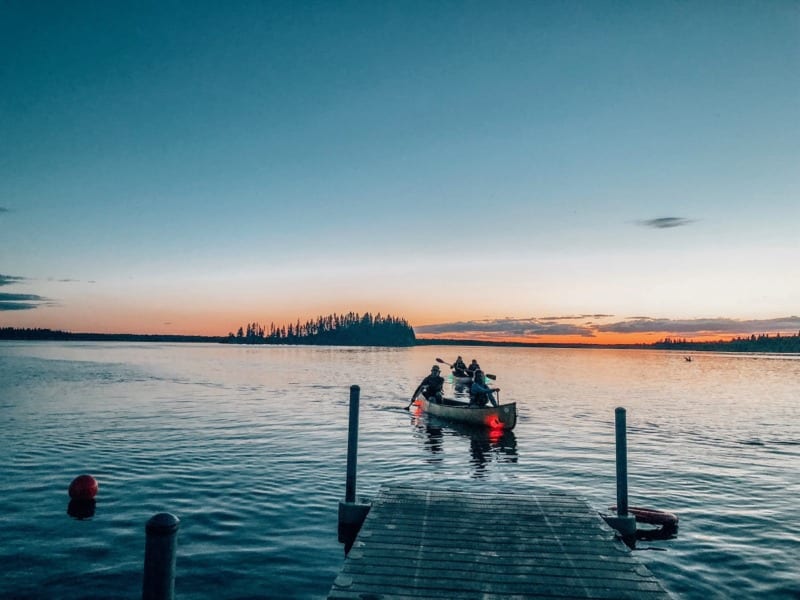
Explored by Mayuri of Canada Crossroads
One of the top national parks in Canada, Elk Island, is a stargazer’s paradise. The park is easily accessed from Edmonton, the capital city of the Canadian province of Alberta. Once you arrive to Edmonton International Airport, Elk Island National Park is just 30 minutes away by car.
Elk Island is part of the Beaver Hills Dark Sky Preserve in Canada, along with the nearby Cooking Lake-Blackfoot Provincial Recreation Area. One epic thing to do at Elk island is to attend the annual Star Party in the first week of September. Here, hang out by the campfire while soaking in starry skies up above.
To enter Elk Island, there is an entry fee of $20 CAD/vehicle. You will easily find parking spots, day-use areas for picnics, canoe and kayak rentals, and walking trails.
Other than stargazing, Elk Island is known for bison conservation. Inside the park, traverse the Bison Loop, where wildlife roams about freely in their natural habitat.
For accommodation, Edmonton is a good option to find budget- to luxury-level hotels and AirBnBs.
Atacama Desert, Chile
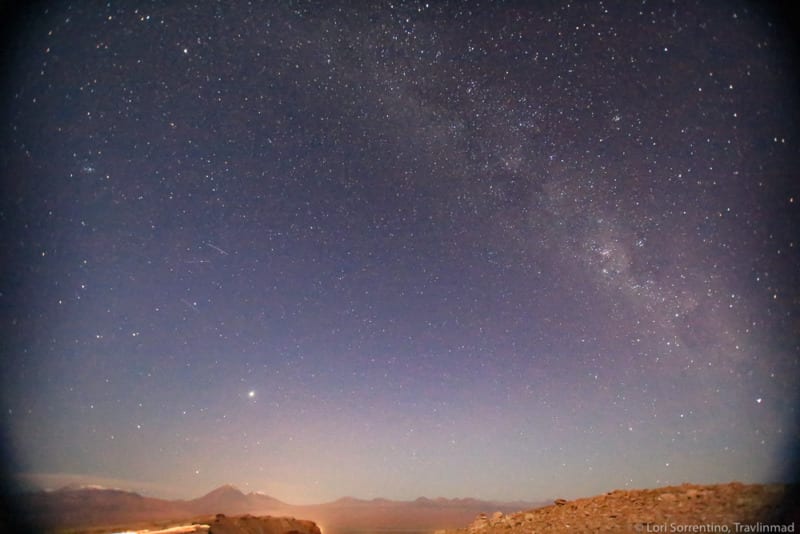
Explored by Lori of Travlin Mad
The Atacama Desert landscape in northern Chile is otherworldly and a prime destination for outdoor lovers. If you love stargazing or astrophotography, it should be on your shortlist of incredible stargazing locations to visit. At an elevation of 7,900 feet with no ambient light from nearby cities, the Atacama is without question one of the best places in the world to see and photograph the night sky.
Because of the year-round clear night sky, the ALMA Observatory operates in the Atacama Desert. You can even take a guided tour of the facility on weekends, and view amazing constellations and astronomical phenomenon.
For most travelers, the best way to get here is to fly into Calama Airport and rent a car. The drive to the town of San Pedro de Atacama is easy and scenic. Also, it is the best place to book lodging. The small town is walkable with hotels, hostels, restaurants, cafes, and a killer organic ice cream shop.
To beat the tour buses, make the short drive from town to the Valle de la Luna before late afternoon for incredible moonscape sunsets. Afterward, go to the Valle Overlook for an incredible view of the night sky. It’s just a mile up the road and at the right time of year, you can see the Southern Cross. Bring your tripod, and of course a bottle of fine Chilean wine!
Cherry Springs Dark Sky Park, Pennsylvania, United States
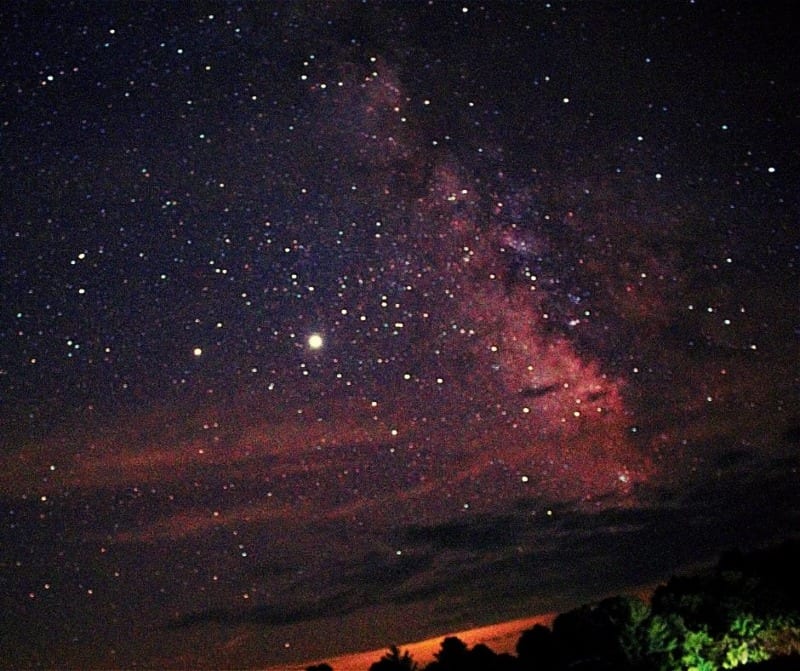
Explored by Pamela of The Directionally Challenged Traveler
Cherry Springs Dark Sky Park is the darkest park on the East Coast of the U.S. Located in north-central Pennsylvania, you can see the Milky Way with your naked eye throughout most of the year. However, the best time to visit is in late fall through winter. Since the sun sets earlier, you have a longer duration of time to see the stars.
There are two observation areas within the park: the public viewing park and the overnight park.
On one side of the main road, the public viewing park is free for public use. Most of the white light from cars is blocked by a dirt dune. However, there is still some white light in the park due to phones, cameras, and flashlights. You are also not allowed to spend overnight in this viewing area.
The overnight observation area on the other side of the road is for overnight stays. Sites in this area are on a first-come-first-serve basis and there is a small fee ($15) to stay here. There is absolutely no white light permitted – not even on cell phones. Be sure to turn the lights off in your car or get everything out of the car before it gets dark. You are not allowed to leave this area until the morning.
Please be respectful of others. There are no fires allowed in the park, as that is reserved for the campground nearby.
READ NEXT | Must-Visit Dark Sky Parks in the United States
Mount Batur, Bali, Indonesia
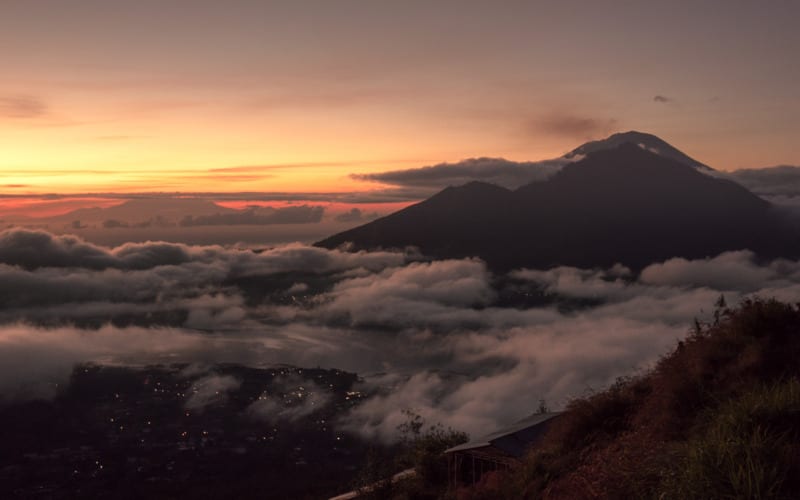
Explored by Ilse of Digital Travel Couple
Bali is a wonderful island and has a lot of variation in nature and things to do. One of the most popular tourist activities is climbing Mount Batur, an active volcano located at the center of two concentric calderas northwest of Mount Agung. Stargazing on Mount Batur is a wonderful thing to do after you’ve completed the trek up the Batur volcano.
There is no observatory in Bali, but you can see the Milky Way with the naked eye in certain areas. There is little to no light pollution in this area as there is less development due to the volcanic activity.
Stargazing is possible in the early evening in Bali, as twilight is very short in the late afternoon and early evening. During Bali’s rainy season (November-April). there is more cloud build-up and more chance for the night sky to be obscured. Therefore, the best time to go stargazing in Bali is in the dry season (May-October) when you are almost guaranteed a cloudless night sky.
The best place to stay when you’re planning on stargazing at the Mount Batur is in Ubud or in the Kintamani area itself. From Ubud, it’s about a one hour drive straight to the entrance of the hike up to Mount Batur.
Northumberland National Park, England
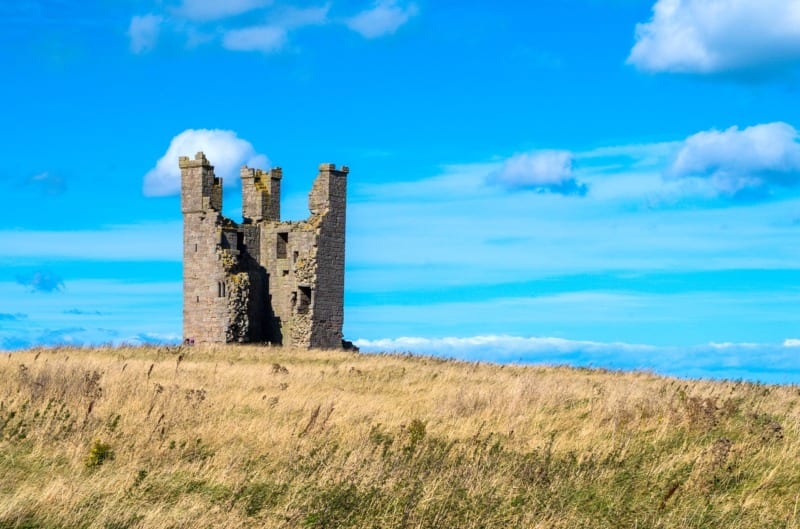
Explored by Roshni of The Wanderlust Within (Photo Credit: Michaela Wenzler)
The Northumberland Dark Sky Park encompasses one of the best National Parks in the UK. Northumberland is one of the largest areas of protected night sky in Europe and spans over 572 square miles (1,483 square kilometers). It has been awarded Gold tier designation, which officially makes it the best place in England to go stargazing. With the naked eye, you can see 2,000 stars at a time and as far as the Andromeda Galaxy.
The Northumberland Dark Sky Park is easily reachable by car in under an hour from Newcastle, 1 hr 45 min from Edinburgh, and 1hr 30 min from Carlisle.
The best time to observe the night sky is between October and March when it’s at its darkest. There are plenty of places to stargaze within the park including Kielder Observatory, Elf Kirk Viewpoint, Hawkhope Car Park, and Stonehaugh Stargazing Pavilion.
One of the best cottages to stay in is Beacon Hill, as they have their own on-site observatory. Another good option is the Whitelee Holiday Cottages as they offer packages including binoculars, star charts, and red light torches.
Lake Tekapo, New Zealand
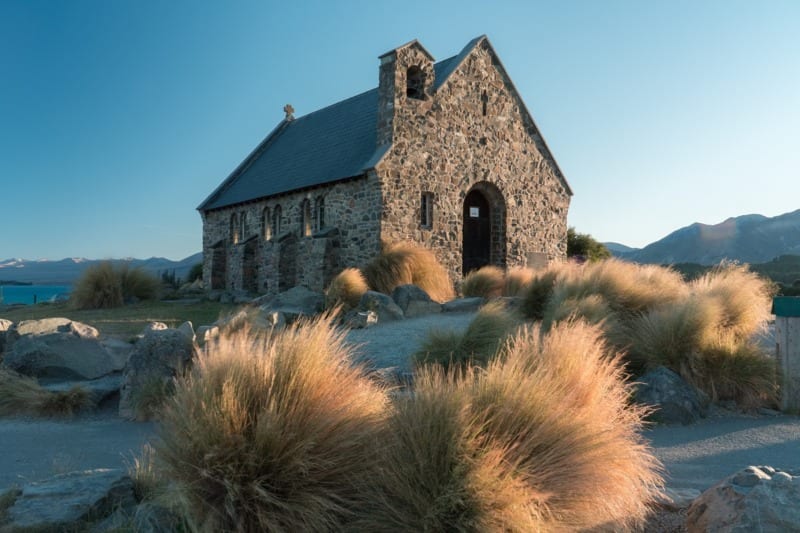
Explored by Megan of My Moments and Memories (Photo Credit: Dean Lawrence)
Lake Tekapo sits on the shore of a glacial blue lake. It is an iconic location in New Zealand, thanks to the Church of the Good Shepherd, one of NZ’s most photographed sites. But what many tourists miss as they pass through the region is what happens here when night falls.
Tekapo sits in the heart of the 4,300 square kilometer Aoraki Mackenzie International Dark Sky Reserve, with light pollution strictly controlled in the area. It is one of only 8 such areas in the world. Simply by looking up at night, it is an incredible delight to be able to view stars and a sky like this. But, there’s more for those wanting to take their viewing up a notch.
During the day, Mount John offers walking trails and incredible views, but at night, it’s home to the Mt John Observatory. The observatory is nirvana for astronomy lovers. Through the Dark Sky Project, the wonders of this incredible starscape are explained in detail.
For another truly unique stargazing experience, head to the Tekapo Hot Springs to have a stargazing and hot pool experience. Imagine lying on a hammock in a heated pool, slowly absorbing the expanse of stars above you. It’s simply magical!
Tekapo Village itself is easy to reach by car (approximately 3 hours from Christchurch airport) and offers a range of accommodation options to suit all types. Although snow is possible in winter, the area is accessible year-round, with plenty of other incredible sights to see.
Cosmic Campground International Dark Sky Sanctuary, New Mexico, United States
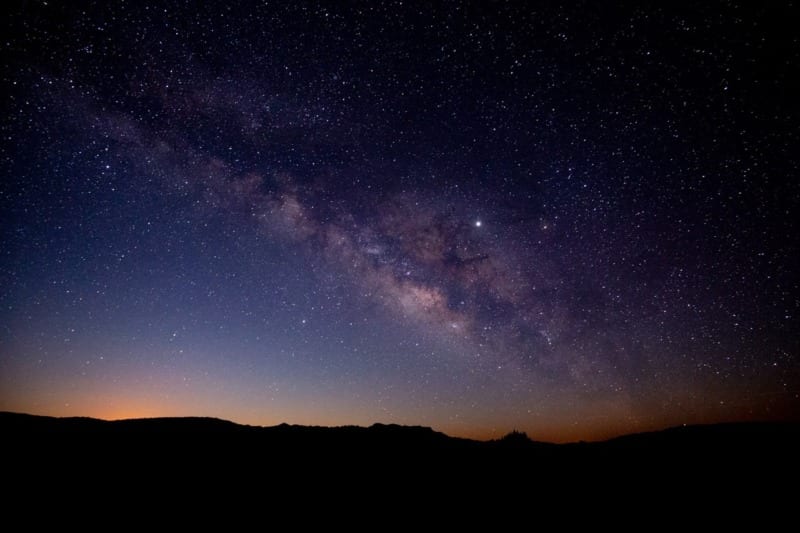
Explored by Nikki of Attractions of America
Cosmic Campground in New Mexico is located 40 miles away from the last source of artificial light. This place is considered to be one of the most beautiful spots in the US for stargazing. The Cosmic Campground International Dark Sanctuary is one of the 10 recognized sanctuaries by the IDA.
The destination falls by the U.S Highway 180. If driving to the campground, you should arrive while natural light is still available. The site becomes completely dark later, and finding the spot to enjoy the stars will be difficult if you arrive late.
The ideal time to get the best view of the stars in a clear sky is spring, fall, and winter. Also, during the dark phase of the moon, the stars in the sky become more prominent. So, plan your trip accordingly.
The campground has ample space for tent camping, and shared toilets are available on site. Camping is allowed for a maximum period of 14 days. The nearest town is Alma, New Mexico, where you will find convenience stores, cafes, and a gas station.
Try to pitch your tent near a telescope observatory pad and set up your telescope beforehand. The place offers a 360-degree view of stars, so every point is equally good. But try to be in a place where there are fewer people as it will help you enjoy your stargazing even better. Cosmic Campground has a no light period from 10 PM to 6 AM.
The Arabian Desert, United Arab Emirates
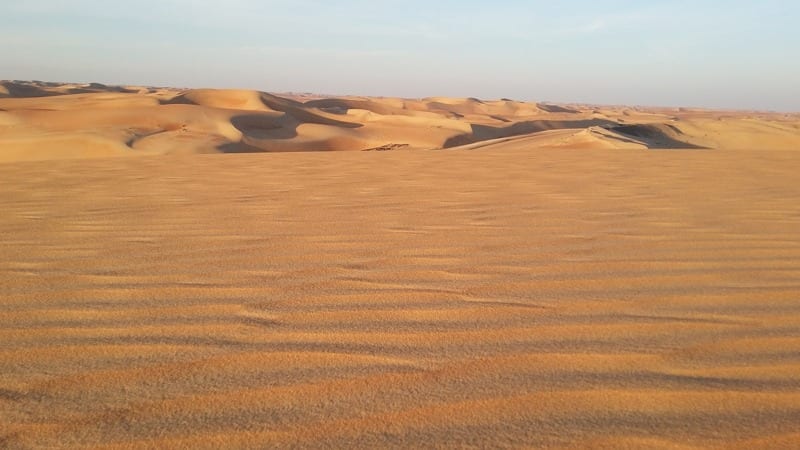
Explored by Monica of This Rare Earth
One of the most beautiful locations on earth to go stargazing is in the vast Arabian Desert. The area is so empty, dark, and quiet that it creates the most beautiful view imaginable. Specifically, I am talking about The Empty Quarter in the United Arab Emirates.
This area of desert is located more than 2.5 hours south of Abu Dhabi and 4.5 hours outside of Dubai. You can imagine how dark this desert is, situated so far away from civilization.
Hiring an expert guide is the best way to get here. The desert is not a place to venture into if you aren’t familiar with how to drive on the dunes or navigate the sand.
Once it’s dark, I recommend hiking over the dunes to a secluded patch of sand and looking up. I have been treated to some of the most stunning and bright star-scapes and shooting star displays that I’ve seen anywhere on the planet! Any time of year is great for star-gazing. However, the summer months are extremely hot during the daytime. Overall, the most ideal months all-around are spring and fall.
Most people stay in Abu Dhabi before venturing into the desert, which offers everything from budget to luxury accommodation. A nice mid-range option with an affordable price is Novotel Abu Dhabi Al Bustan, Abu Dhabi.
Kerry International Dark Sky Reserve, Ireland
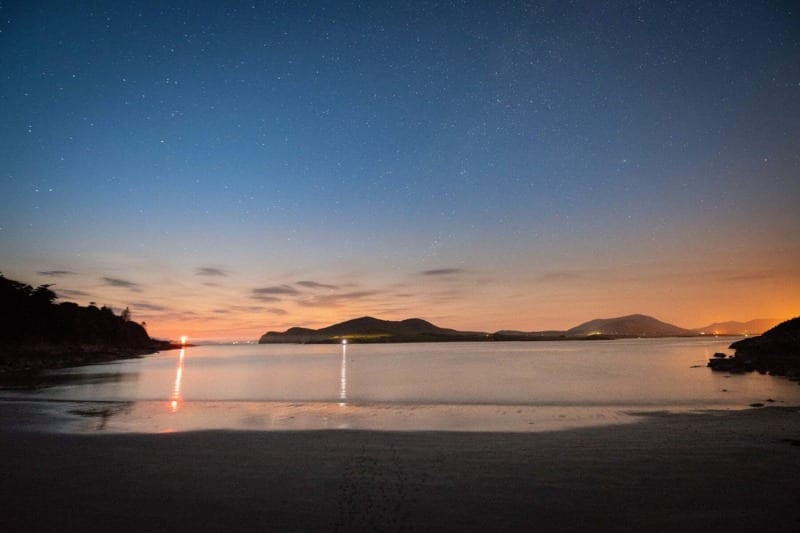
Explored by Nils and Emer of Let’s Go Ireland (Photo Copyright: Tom Archer via Ireland’s Content Pool)
Ireland is a must-visit location for stargazers. Impressive views of the night sky are be found all along Ireland’s Wild Atlantic Way coastal drive route. Particularly, Malin Head in County Donegal is one of the best places to see the Northern Lights in Ireland.
On the remote Iveragh Peninsula, the Kerry International Dark Sky Reserve offers world-class views of the skies above. By day, the stunning coastal and mountainous landscapes of Kerry are captivating. However, at night, with the right conditions, the clarity of the skies is simply breathtaking. The significance of astronomy in the area dates back millennia and has been recorded in stone monuments found in the locality.
Importantly, the Kerry International Dark Sky Reserve is remotely located far from big cities and major sources of light pollution. Thus, it is ideally suited to stargazing. Divided into two sections, the darkest parts of the reserve are within the core dark zone, while more limited light is found in the buffer zone. If you want to enhance your knowledge, take one of the guided tours offered by Kerry Dark Sky Tourism based in Ballinskelligs.
The remoteness of the location means that you must use your own form of transportation. If you are looking for a place to stay that won’t mind you being out all night, try the Staigue Fort House in Castlecove.
Colca Canyon, Peru
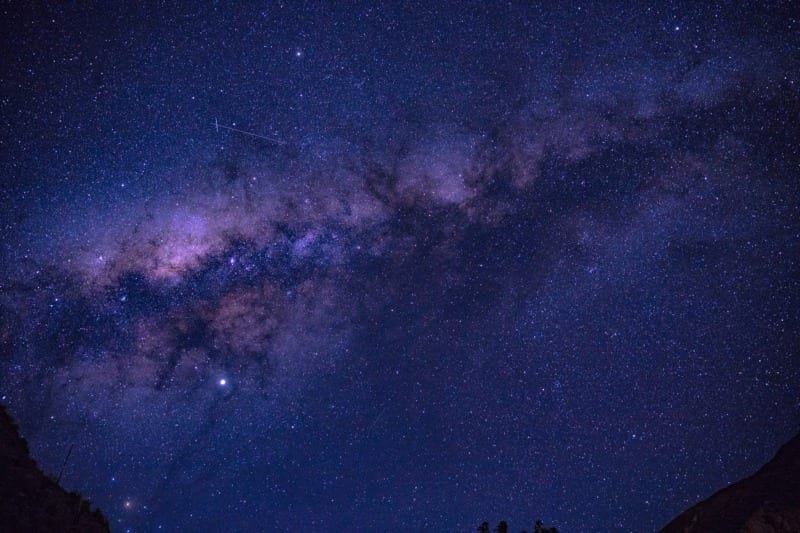
Explored by Sean of Living Out Lau
The Colca Canyon is located in the southern part of Peru and is the second deepest canyon in the world. With depths twice as deep as the Grand Canyon in the United States, the Colca Canyon hike is one of the most popular activities in Peru.
Aside from hiking, light pollution is minuscule in the Colca Canyon, and photographers can achieve some stunning astrophotos. When we visited, the sky was so clear you could see the Milky Way with the naked eye!
However, arriving at the Colca Canyon isn’t an easy task. Many visitors decide to go with a tour company from Arequipa (the closest tourist city from Colca Canyon) because doing it independently requires too much unreliable pubic transportation. If you want the opportunity to photograph the stars, you must opt for the 2-day-1-night or 3-day-1-night trek. These options will allow you to stay at the bottom of the canyon overnight, the ideal spot for photographing the sky at night.
We recommend that you hike in the dry season in Peru, which goes from May to October. However, if you are chasing after a certain constellation, keep in mind that the Colca Canyon is in the southern hemisphere. Some constellations might not be visible depending on the time of the year!
Møn and Nyord Dark Sky Park and Community, Denmark
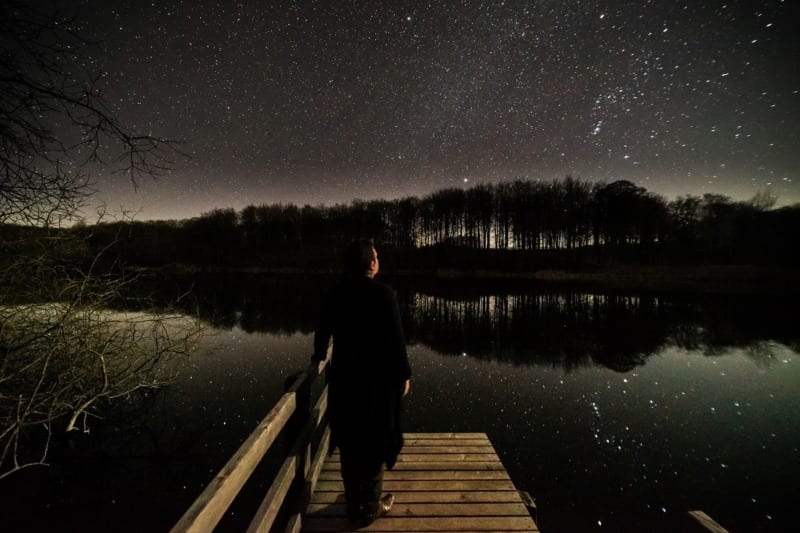
Explored by Sara of Going Cosmic (Photo Credit: Morten Pihl)
The little-known islands of Møn and Nyord, on the south-east corner of the Danish archipelago, have a unique claim. Not only was this the first Scandinavian destination to be awarded IDA Dark Sky status, but it’s also the world’s first location to simultaneously become both a Dark Sky Park and a Dark Sky Community.
Here, you’ll find utter tranquility, with miles of walking and cycling routes. It’s also a birdwatcher’s paradise and, of course, light pollution is virtually non-existent, making for some stunning stargazing opportunities.
Without a doubt, the place to stay is at Camp Møns Klint. This is close to Denmark’s highest point, the striking Møns Klint chalk cliffs. You can camp, or opt for a forest hut or family cabin and there are dedicated Dark Sky facilities and events throughout the year. Make sure you visit the Møns Klint GeoCenter just down the road, for its fabulous interactive exhibits and presentations.
Local island specialists provide star safaris and astrophotography tutorials. Even on cloudy nights, you can book a night walk and experience the sensory impressions of pure darkness – it’s just as magical. Another great stargazing venue is the Damsholte Observatory, with its state-of-the-art technology.
To get to Møn by public transport, take any mainline train to Vordingborg and hop onto the next bus to the island’s capital, Stege. There’s a good network of buses around the island plus plentiful taxis for the harder-to-reach corners.
Monsaraz, Portugal
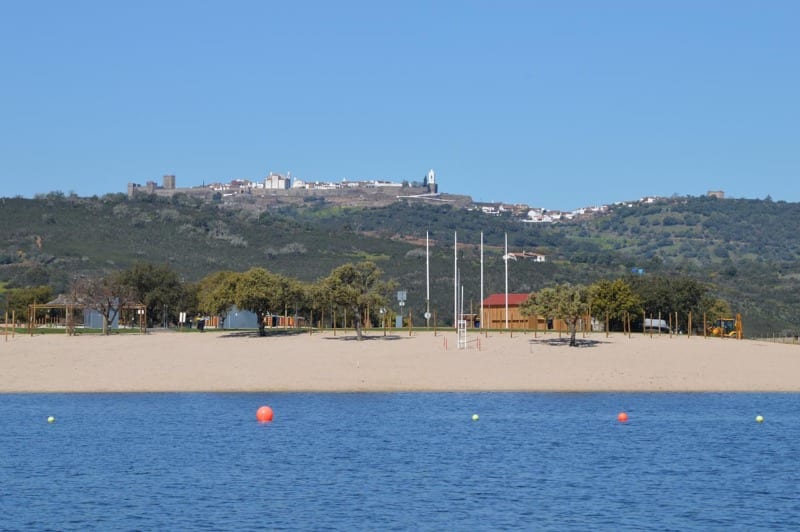
Explored by Julie of Julie Dawn Fox in Portugal
The sparsely populated plains around the Alqueva reservoir of Portugal get an average of 268 clear night skies every year, making it a perfect Dark Sky destination.
The official Dark Sky Observatory near Monsaraz has top-grade telescopes for enthusiasts. Here, guided observation sessions and several of the accommodations in the area have a telescope for guest use. If you’re unlucky with the weather, you can make do with the amazing astrophotography on display at the Observatory’s small museum.
Monsaraz is a worthy daytime destination, too. This quaint hilltop village features a medieval castle that overlooks the endless countryside and calm waters of the lake. Away from the village itself, there is very little in the way of light pollution to interfere with your stargazing.
You can enjoy the wonder and romance of the night skies from the rooftop terrace of a Monsaraz guesthouse. Alternatively, stargazing is also optimal on Monte Alerta or the 5-star São Lourenço do Barrocal estates. Another optimal spot is down by the lake, near the Clube Náutico and seasonal lakeside beach.
You’ll need a car to get to Monsaraz and surrounds, especially if you are staying overnight and see the stars.
El Torcal de Antequera, Spain
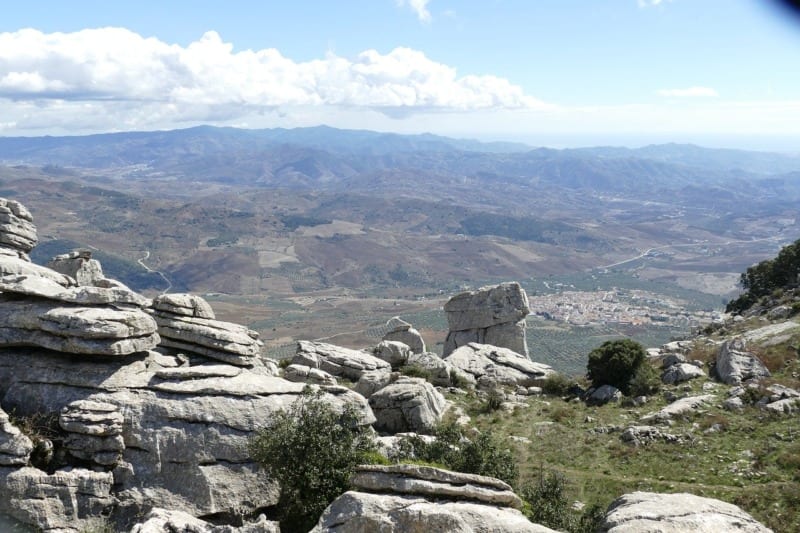
Explored by Paulina of Paulina on the Road
If you wish for stargazing, you must plan a tour of 3 days in Malaga. Here, you will be astounded by the stars during a visit to one of the most beautiful destinations, El Torcal in Antequera near Malaga. The Andalucian sky engages plentiful visitors for stargazing. Hiking in the panoramic landscape of ‘El Torcal’ will make you feel like you are in an entirely different world.
This charming site is situated over 1,300 m above sea level. Further, the rain, wind, and freezing winters have naturally sculpted the open-limestone, making for a memorable scene.
El Torcal is located 15 km South on the A7075 on the right-hand side on Villanueva de la Concepcion from Antequera. The road spanning up to El Torcal is 3km after Villanueva de la Concepcion on the left-hand side. Moreover, the best time to visit El Torcal is during Autumn and Spring when the beauty is at its peak. During this time of year, the entire area is surrounded by beautiful wildflowers.
Some other specific best locations for Stargazing in Malaga include the Entrerríos De Mijas and Astronomical Observation For All, El Torcal. There are likewise several accommodation options near El Torcal, including Hotel Los Dolmenes, Hotel Lozano, Casa Castillo, or Parador de Antequera.
Hortobagy National Park, Hungary
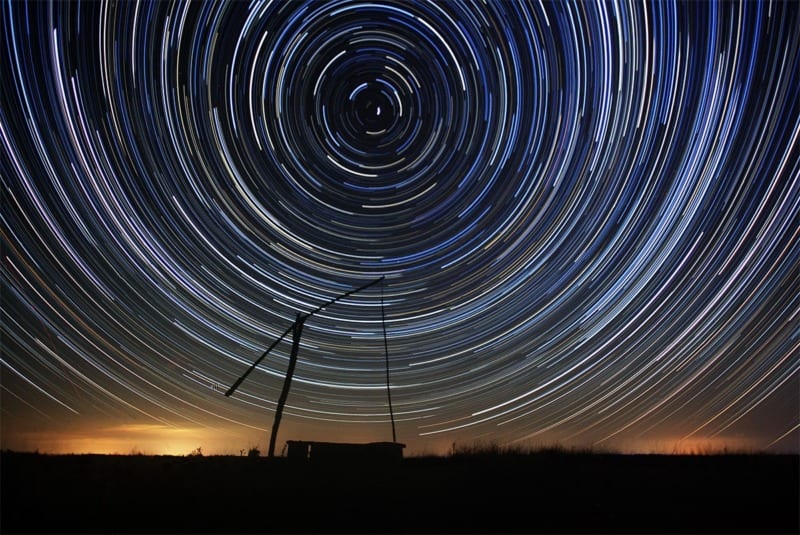
Explored by Sara of Going Cosmic (Photo Credit: Szilágyi Attila HNPI)
If you’re looking for a more unusual destination to go stargazing, Hungary’s Hortobágy Starry Sky Park fits the bill perfectly.
Located within the Great Plain of the southwest, this IDA Dark Sky Park, one of three in Hungary, is like the Wild West of Europe. With its seemingly endless grasslands giving unobstructed, panoramic views, it’s one of the best places in the world to observe the night sky and really get that sense of our place in the cosmos.
The Park protects the region’s migrating birds and nocturnal wildlife from the harmful effects of light pollution and of course, from too much human activity, so some areas have restricted access. But, there are two great observation points with awesome views of the Milky Way – the bird-watching tower between Balmazújváros and Tiszacsege and the railway station in Hortobágy-Halastó.
The public season at Hortobágy runs from April to October. Note that the Visitor Centre is the best resource for planning your stay. They will have all the information regarding events, activities, and accommodation and are able to arrange stargazing walks with local experts. During these walks, you’ll also learn about the traditional shepherds of the region who, for hundreds of years, navigated the landscape by the constellations.
Visiting the Park is easy by car and there are regular trains from Budapest. The thriving city of Debrecen is also just a short distance by road or rail and well worth a day trip.
Sedona International Dark Sky Community, Arizona, United States
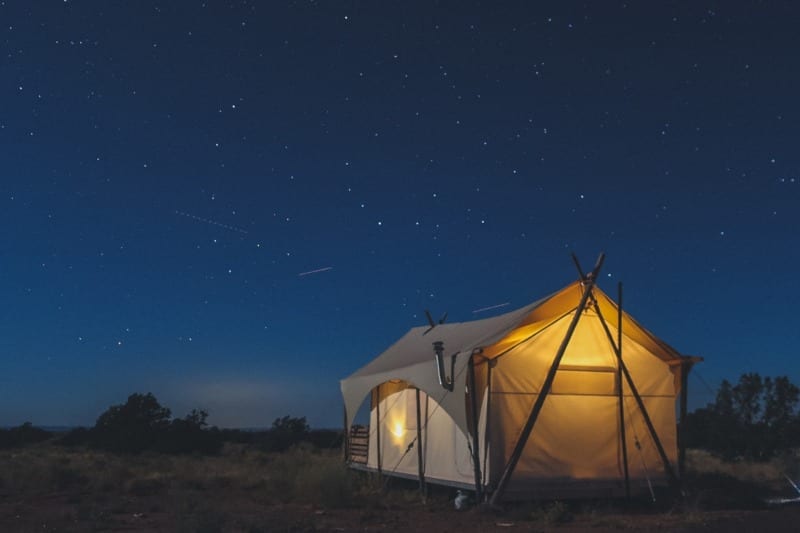
Explored by Valentina of Valentina’s Destinations
Sedona is a gorgeous little town in Arizona. It’s a popular spot that’s located an hour outside Phoenix and 3 hours from the Grand Canyon. Sedona is famous for its beautiful red rock geography, its community of mystics, and world-class spas.
The town is also an internationally classified Dark Sky Community. Sedona makes it their mission to reduce light pollution! Reducing light pollution doesn’t only affect stargazing. Numerous studies have demonstrated a link between light pollution and changes in wildlife activity.
Stargazing, and UFO-gazing, are some of the most popular things to do in Sedona. You are usually able to see stars in Sedona year-round. Although, you should avoid visiting in July and August because this is technically considered ‘monsoon season.’
There are many wonderful places around Sedona to enjoy stargazing. The Two Trees Observation Area is a popular spot to stargaze. However, if you are looking for a more private, off-the-beaten-path experience, try the Baldwin Trail.
Texel Island, The Netherlands
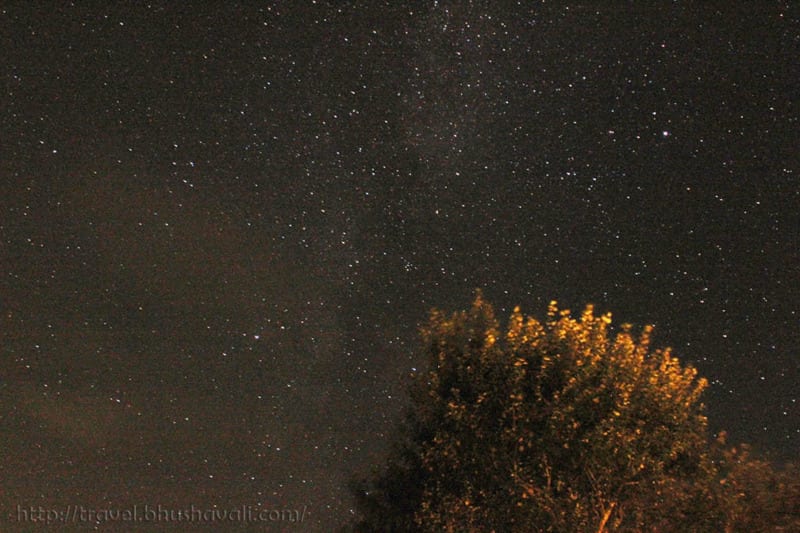
Explored by Bhushavali of My Travelogue by Bhushavali
Texel island is the biggest Wadden Island (North Sea island) located to the north of The Netherlands. Though called “largest,” the entire island is just 25 by 8 kilometers. This is a quaint little place and a perfect area for an ecological holiday.
Reaching this island requires a ferry trip from Den Helder, the northern tip of the mainland of The Netherlands.
There are 7 villages on Texel island and hotels and Airbnb’s are available in all the villages.
The entire island hardly has any light pollution and is perfect for stargazing from your own accommodation. However, consider a visit to De Koog, where De Jager Observatory is located. Their official website updates every month on the visible globes, binary stars, open star clusters, Planetary nebulae, and star patterns in the night skies. Public stargazing opportunities happen here a few times a week, as well as some educational lectures on the subject.
Monte Bondone, Italy
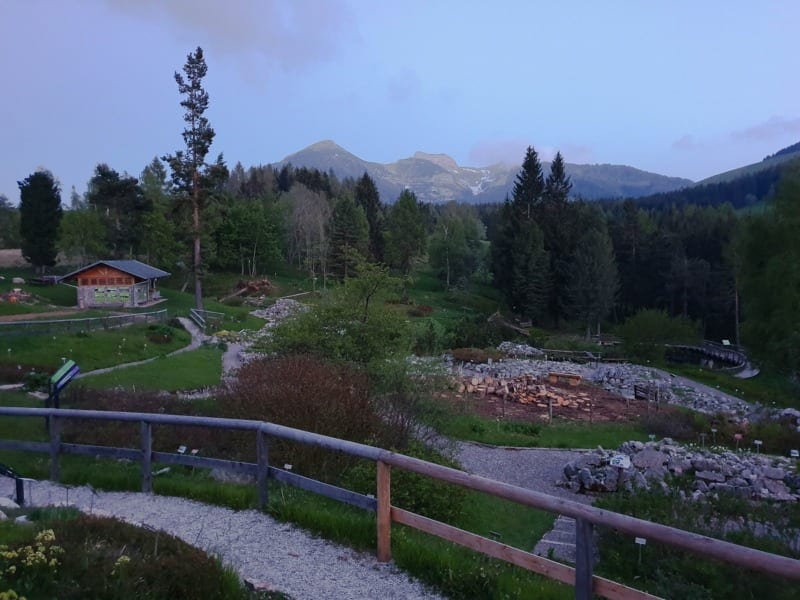
Explored by Joanna of The World in My Pocket
Trentino is a beautiful part of Italy, yet to be discovered by foreign tourists. Located in the North of the country, Trentino is home to a natural paradise, which include part of the famous Dolomites. With such high altitudes, Trentino is a fantastic region to go stargazing.
Monte Bondone, located in Valle dei Laghi, is the most accessible stargazing point from Trento. To reach the small astronomical observatory at its top, in Viote, you can either drive or take the bus. Driving or taking a taxi is the easiest way, as the bus doesn’t run at night. An even better alternative is to spend the night at the top, in one of the nearby ski resorts.
The observatory on Monte Bondone, called “Terrace of the Stars,” has two telescopes and organizes different events for stargazing lovers. It is set in a beautiful location, on the plateau of the mountain at 2,180 meters, away from all the lights. Here, you are able to observe the stars without any interference. Close to the observatory, in Viote, there is also an interesting alpine botanical garden, which you can visit before the darkness sets.
How do you find the best spot for stargazing?
Finding the best places to go stargazing relies heavily on where light pollution is low.
What is light pollution? Well, a great dark sky location has a small amount of skyglow, or the effect that surrounding lights have on the brightening of the sky.
Have you noticed how light the sky looks when you see a city from a distance or even a nearby sports complex during game night? The effect on how well you can see the stars is extremely diminished.
Conveniently, the Dark Site Finder has created a handy map showing areas where light pollution is most pronounced throughout the world.
Unsurprisingly, the oceans, montane regions, desert landscapes, and areas of little human development have the least amount of light pollution.
Although you don’t have to travel to the middle of the ocean to find a great dark sky spot, this map shows how light pollution can compound to create not-so-starry places. And, it makes us appreciate the gems in this list even more!
Have you been to any of these incredible dark sky, stargazing destinations? Where in the world have you visited with stars that seemed so close you could touch them? Let us know in the comments!
Happy Stargazing!
Christa and Nathan
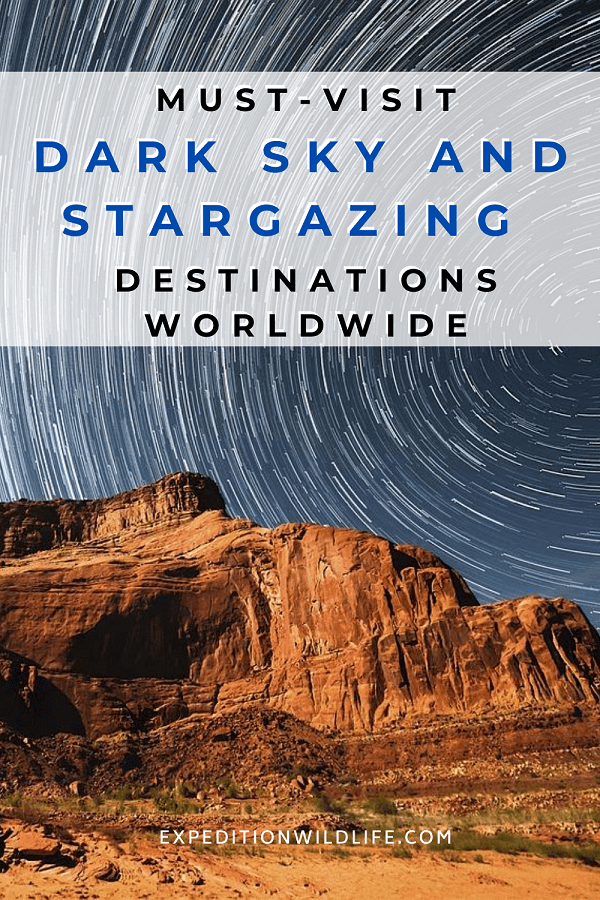

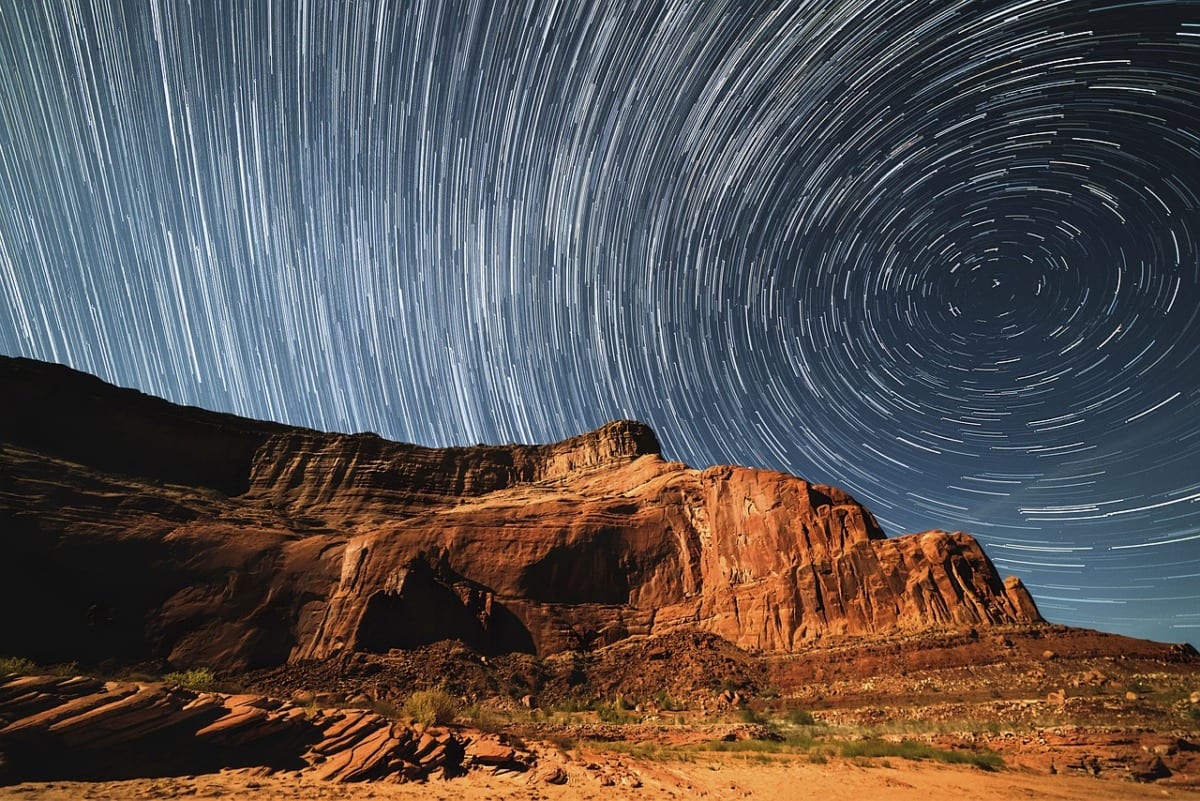
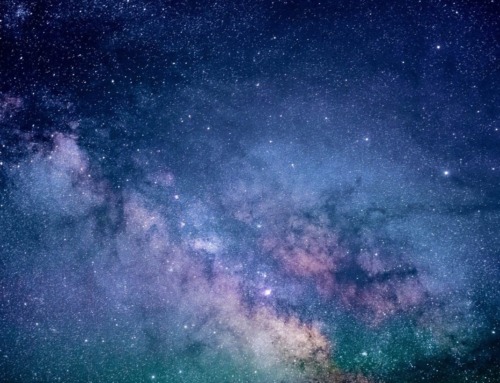
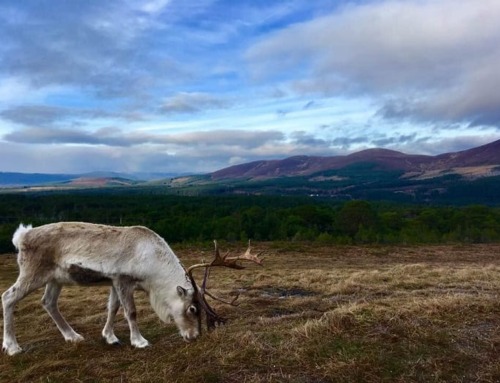
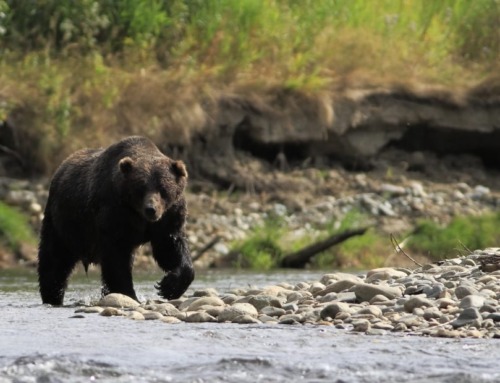
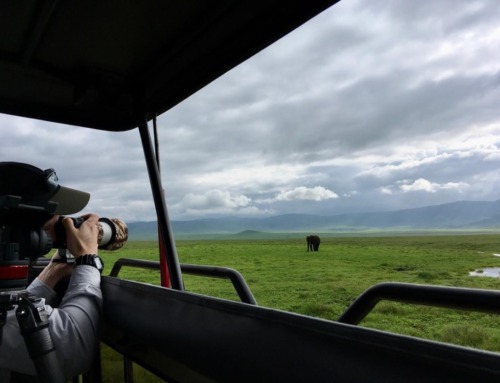
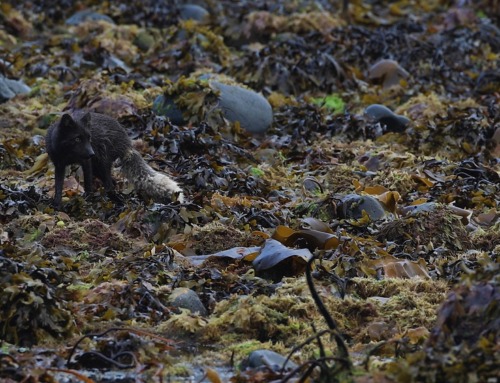
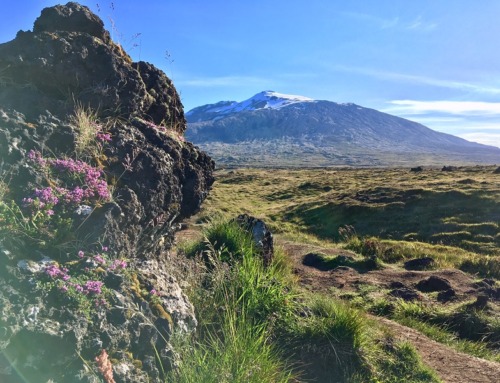
I love these tips about the best stargazing destinations in the world! Hope to see them all one day :)
Me, too, Ilse! They definitely look incredible :)
This is great – it’s good to see some of the more unusual stargazing destinations here, as well as the much-loved popular sites. Long live dark skies!
Sara, so glad you enjoy it, too! We love the variety on this list :) Happy stargazing!